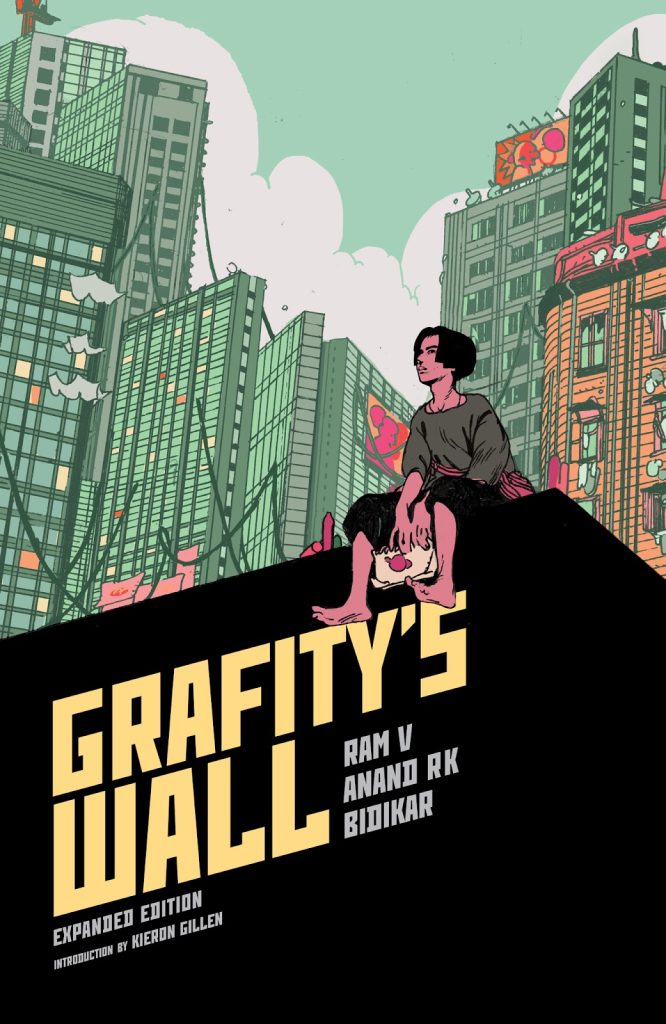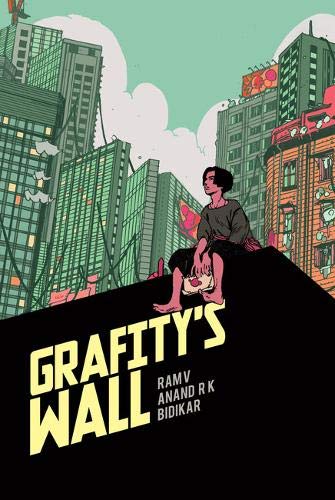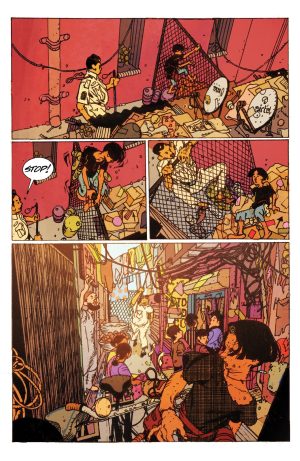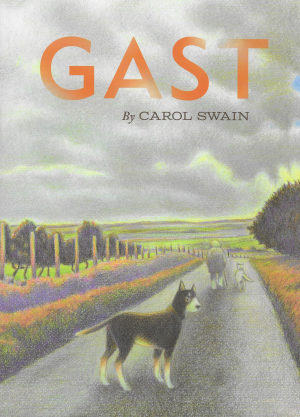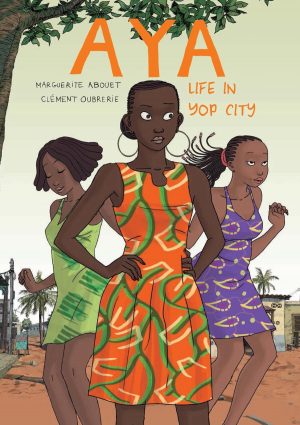Review by Ian Keogh
There are graphic novels where the artist is just drawing the script they’re given, and there are some who take what they’re given and let the visuals take flight. Just a quick flick through Grafity’s Wall shows the richness of Mumbai as supplied by Anand Radhakrishnan, elevating the city to a fifth leading character. It’s culturally and historically vibrant, brimming with colour and leaving no doubt people live in the cluttered neighbourhoods, nor that it’s very difficult to escape them, which is the problem Suresh has. An immensely talented artist he’s followed over the first chapter from spraying his art on a vacant wall in a well to do area all the way to his father throwing his sketchbook into the sewer running past their house and warning about the damage of dreams.
There are two methods of escaping the squalor, and in common with every other destitute area of the world both involve drugs, either selling or using, and Suresh’s mate Jay has taken the first option. It’s useful when it comes to freeing Suresh from the police after his wall painting as Grafity, but comes with it’s own problems as detailed over the second chapter, while the third switches focus again.
Ram V’s clever title has a double meaning, and to be fair to him, it’s not just Radhakrishnan mythologising Mumbai. Midway through there’s a nice analogy where a cook in a Chinese restaurant compares the city’s cultural melting pot to the chop suey he makes, which reaches perfection when the flavours combine so perfectly no-one can identify exactly what’s in it. Would that more people took the same attitude to the mixes in their cities. It’s not the only occasion when there’s a nice observation that makes you reconsider the ordinary.
Although Grafity/Suresh takes the title, the story is about Mumbai and its possibilities as experienced by four people over one sweltering summer. It’s gradually revealed they all have dreams that are gradually being crushed, but it turns out there is another method of escape after all. V’s characters are so well defined that an air of tension as to their fate hangs over Grafity’s Wall from the start, massively ramped up for the final chapter. That features a beautiful ending topped by the epilogue. You may never visit Mumbai yourself, but there’s no excuse for not spending some joyful time there in the vibrant company of Suresh, Jay, Chasma and Saira.
Both British and American editions are hardcovers, but the Expanded Edition differs from the UK edition by virtue of Kieron Gillen’s introduction and additional process pages.
